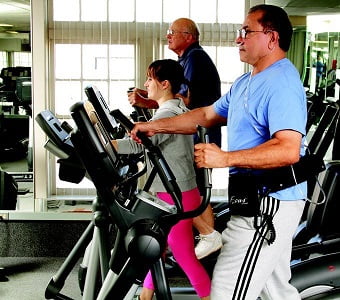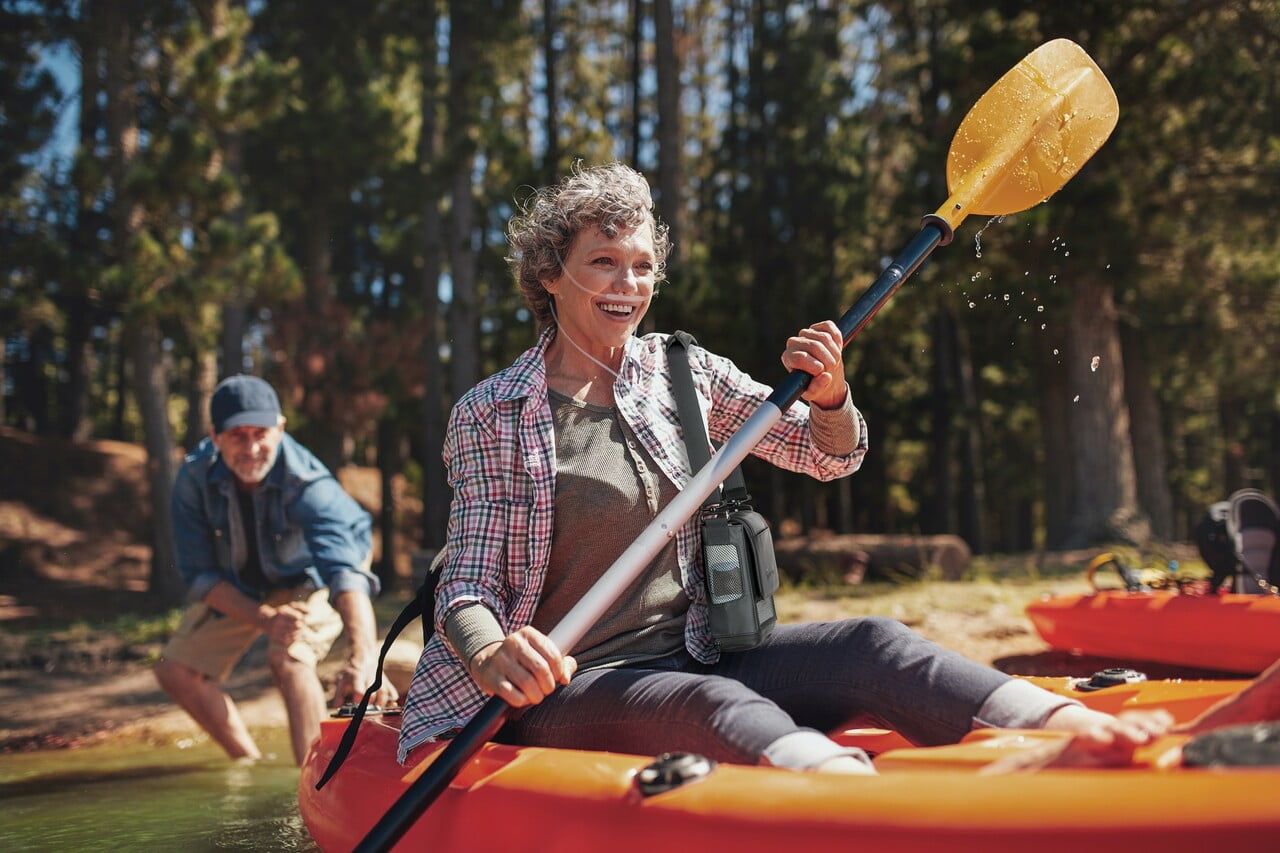Staying Healthy and Fit While Using Portable Oxygen
Posted by Portable Oxygen Solutions on 23rd Feb 2014
If you have COPD and have been prescribed oxygen therapy, you may wonder if you should exercise or exert yourself.

1. Pack your accessories
The choice to lead an active lifestyle despite living with COPD is a very important decision.
Sticking with an exercise routine is difficult for all of us. For oxygen users that have heavy equipment to manage, just trying to stay mobile is a difficult task. The ability to remain active while using oxygen may start with your oxygen therapy equipment. Having the right portable oxygen solution not only aids in your breathing but also helps to promote a healthier, more active lifestyle. You can support your cardiovascular system, maintain your weight, and work toward a stronger body when you use portable oxygen systems to help you reach your fitness goals. With systems weighing less than 5 pounds, you can enjoy workouts, golf outings, simple walks in the park, and more, without the worry of running out of oxygen.
Exercise has a tremendous number of benefits, such as increasing the flow of oxygen to your muscles and organs thus improving overall health—not to mention strengthening your heart and lungs, improving your ability to sleep restfully and lowering your stress and anxiety.
You can Exercise While on Oxygen Therapy
The first important step to any exercise routine for oxygen therapy is to consult your doctor to get medical clearance. Ask your doctor if he or she can recommend specific workouts or activity levels that are right for you.
According to the COPD Foundation, your exercise can basically be divided into 3 types:
- Stretching:
Taking the time to stretch your arms, legs, and back before even the simplest of exercises, such as walking and light gardening, may prevent injury. Routine stretching can also help to increase your overall range of motion and flexibility. Remembering to thoroughly stretch before and after each activity is a great way to reduce soreness and muscle cramping.
- Aerobic or Cardiovascular:
Simple aerobic drills will strengthen the heart and lungs and help deliver more oxygen to your bloodstream. With time, aerobic exercise can decrease your blood pressure and improve your breathing. Some of the more common aerobic exercises include walking, jogging, jumping rope, use of a treadmill, rowing and swimming.
- Strengthening:
In addition to getting your heart pumping, you are also in need of some strength training. You’ve got to strengthen your bones, joints, and muscles so you can stay mobile and keep healthy. For people with COPD, upper body strengthening exercises are especially helpful in increasing the strength of your respiratory muscles.
No need to feel as though you should join a gym to get fit. By simply planning out some routine exercises using weights and resistance bands will help build your upper body strength and help condition you to walk, swim or perform other aerobics. Dependent on your abilities, using your own body weight such as push-ups and sit-ups and lifting weights are great ways to get in shape. Remembering to take the stairs instead of the elevator and activities such as gardening—with all that digging and shoveling—work great, too.
No matter your background and condition, you can use exercise to champion healthy living habits for a more independent life. Having the right oxygen equipment may be as important as the oxygen, itself, in terms of staying active and continuing a long, healthy and happy life. Your portable oxygen concentrator can become another tool for healthy living.
Call us toll free at 1-800-958-0192.

